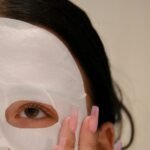Traditional Chinese skincare is a holistic approach that has been refined over thousands of years, deeply rooted in the philosophies and practices of ancient China. This system emphasizes balance, harmony, and the interconnectedness of the body, mind, and spirit. Unlike many Western skincare regimens that often focus solely on external beauty, traditional Chinese skincare seeks to address the underlying health of the skin by considering the individual’s overall well-being.
This approach is not merely about achieving a flawless complexion; it is about nurturing the body from within and understanding how various elements influence skin health. The principles of traditional Chinese medicine (TCM) play a pivotal role in skincare practices. TCM views the skin as a reflection of internal health, where imbalances in the body’s systems can manifest as skin issues.
This perspective encourages individuals to adopt a comprehensive approach to skincare that includes dietary choices, lifestyle habits, and the use of natural ingredients. As modern consumers increasingly seek natural and effective solutions for their skincare needs, traditional Chinese skincare offers a wealth of knowledge and practices that can be adapted to contemporary lifestyles.
Key Takeaways
- Traditional Chinese skincare is rooted in ancient beauty practices and the concept of yin and yang.
- Herbal ingredients play a crucial role in traditional Chinese skincare, emphasizing natural and holistic approaches.
- Traditional Chinese skincare techniques include gua sha, facial cupping, and acupressure for promoting youthful skin.
- A skincare diet and nutrition are essential components of traditional Chinese skincare rituals and routines.
- Modern adaptations of traditional Chinese skincare can be incorporated into your routine for a holistic approach to skincare.
Ancient Chinese Beauty Practices
Natural Ingredients for Glowing Skin
Historical records show that ancient Chinese women used a variety of natural ingredients to enhance their beauty. Rice water, for instance, was a popular facial cleanser and toner due to its gentle properties and ability to brighten the skin. Pearl powder was also highly valued for its purported ability to promote a luminous complexion and reduce signs of aging.
Herbal Remedies for Skin Nourishment
Another notable practice was the use of herbal infusions and decoctions. Ingredients like ginseng, goji berries, and chrysanthemum were not only consumed for their health benefits but were also applied topically to nourish the skin. These herbal remedies were believed to promote healthy, radiant skin and were often used in conjunction with other natural ingredients.
A Legacy of Holistic Skincare
These ancient beauty practices were often passed down through generations, with families maintaining their own unique recipes and rituals. The emphasis on natural ingredients and holistic care laid the foundation for what we now recognize as traditional Chinese skincare. This rich cultural heritage continues to influence modern skincare practices, with many people around the world embracing the wisdom of ancient Chinese beauty rituals.
Understanding Yin and Yang in Skincare

The concept of Yin and Yang is central to traditional Chinese philosophy and plays a significant role in skincare practices. Yin represents qualities such as coolness, moisture, and nourishment, while Yang embodies warmth, activity, and energy. In skincare, achieving balance between these two forces is essential for maintaining healthy skin.
For example, dry or irritated skin may be considered Yin-deficient, requiring nourishing and hydrating ingredients to restore balance. Conversely, oily or acne-prone skin may be seen as overly Yang, necessitating cooling and purifying treatments. This duality extends beyond just the ingredients used; it also influences the application techniques and timing of skincare routines.
For instance, nighttime routines may focus on nourishing and hydrating products that align with Yin energy, while daytime routines might incorporate lighter formulations that promote Yang energy and protect against environmental stressors. Understanding this balance allows individuals to tailor their skincare regimens to their specific needs, promoting overall skin health.
Importance of Herbal Ingredients in Chinese Skincare
Herbal ingredients are at the heart of traditional Chinese skincare, with many formulations drawing from the rich pharmacopoeia of TCM. Each herb is believed to possess unique properties that can address specific skin concerns. For example, licorice root is renowned for its anti-inflammatory properties and is often used to soothe irritated skin and reduce redness.
The use of herbal ingredients is not limited to topical applications; many are also consumed as part of a balanced diet to promote skin health from within. Goji berries, rich in antioxidants, are often touted for their ability to combat oxidative stress and support skin vitality.
Incorporating these herbs into daily routines can enhance the effectiveness of external treatments while fostering a holistic approach to skincare.
Traditional Chinese Skincare Techniques
Traditional Chinese skincare techniques encompass a variety of practices designed to promote circulation, enhance product absorption, and improve overall skin health. One such technique is facial massage, which has been practiced for centuries in China. This method involves gentle kneading and tapping motions that stimulate blood flow and lymphatic drainage, helping to reduce puffiness and promote a radiant complexion.
Another technique gaining popularity is the use of jade rollers. These tools have been used for centuries in China to cool the skin, reduce inflammation, and enhance the absorption of serums and oils. The cooling effect of jade is believed to help tighten pores and improve skin elasticity.
By incorporating these techniques into daily routines, individuals can elevate their skincare practices while embracing the wisdom of ancient traditions.
Incorporating Gua Sha and Facial Cupping for Youthful Skin

Gua Sha is an ancient Chinese practice that involves scraping the skin with a smooth-edged tool, typically made from jade or rose quartz. This technique is believed to promote circulation, release tension in facial muscles, and encourage lymphatic drainage. Regular use of Gua Sha can lead to improved skin tone, reduced puffiness, and a more sculpted appearance.
Facial cupping is another technique rooted in traditional Chinese medicine that has gained traction in modern skincare routines. This method involves placing small suction cups on the face to create a vacuum effect that stimulates blood flow and encourages collagen production. The combination of Gua Sha and facial cupping can provide a powerful boost to any skincare regimen, promoting youthful-looking skin while also offering a relaxing self-care experience.
The Role of Acupressure in Chinese Skincare
Acupressure is a therapeutic technique derived from acupuncture that involves applying pressure to specific points on the body to promote healing and balance. In the context of skincare, acupressure can be used to enhance circulation, relieve tension, and improve overall skin health. Certain acupressure points are believed to correspond with facial features; stimulating these points can help alleviate common concerns such as puffiness around the eyes or sagging skin.
Incorporating acupressure into a skincare routine can be as simple as using one’s fingers to apply gentle pressure to specific points while applying serums or moisturizers. This practice not only enhances product absorption but also provides a moment of mindfulness and relaxation during the skincare ritual.
Traditional Chinese Skincare Diet and Nutrition
Diet plays a crucial role in traditional Chinese skincare philosophy, with an emphasis on consuming foods that nourish both the body and the skin. TCM categorizes foods based on their energetic properties—cooling or warming—and their effects on bodily systems. For instance, foods like cucumbers and watermelon are considered cooling and hydrating, making them ideal for promoting healthy skin during hot weather.
Conversely, warming foods such as ginger and garlic are believed to stimulate circulation and support overall vitality. A balanced diet rich in fruits, vegetables, whole grains, lean proteins, and healthy fats can provide essential nutrients that contribute to radiant skin. Additionally, herbal teas made from ingredients like chrysanthemum or goji berries can be incorporated into daily routines for their skin-enhancing benefits.
Traditional Chinese Skincare Rituals and Routines
Traditional Chinese skincare rituals often involve multiple steps designed to cleanse, nourish, and protect the skin. A typical routine may begin with a gentle cleansing using rice water or herbal-infused cleansers followed by toning with natural essences derived from flowers or fruits. The application of serums rich in herbal extracts comes next, targeting specific concerns such as dryness or pigmentation.
Moisturizing is an essential step in these rituals; traditional formulations often include natural oils or creams infused with herbs known for their hydrating properties. Finally, protective measures such as sunscreen or herbal balms may be applied to shield the skin from environmental stressors. These rituals not only focus on external beauty but also serve as moments of self-care that promote relaxation and mindfulness.
Modern Adaptations of Traditional Chinese Skincare
In recent years, there has been a resurgence of interest in traditional Chinese skincare practices within modern beauty culture. Many brands are now incorporating ancient wisdom into contemporary formulations, creating products that blend traditional ingredients with modern technology. For example, some companies have developed serums that combine herbal extracts with advanced delivery systems to enhance absorption and efficacy.
Additionally, social media platforms have played a significant role in popularizing these practices globally. Influencers and beauty enthusiasts share their experiences with Gua Sha tools, herbal masks, and acupressure techniques, making traditional Chinese skincare accessible to a wider audience. This fusion of ancient practices with modern sensibilities allows individuals to explore holistic approaches while benefiting from innovative formulations.
Tips for Incorporating Traditional Chinese Skincare into Your Routine
To incorporate traditional Chinese skincare into your daily routine effectively, start by assessing your skin type and concerns through the lens of Yin and Yang principles. Identify whether your skin leans more towards dryness (Yin) or oiliness (Yang) and choose products accordingly. Look for herbal ingredients known for their benefits—such as licorice root for soothing or ginseng for revitalizing—and incorporate them into your regimen.
Consider adopting facial massage techniques or using tools like jade rollers or Gua Sha stones during your application process to enhance circulation and product absorption. Additionally, explore dietary changes by incorporating more seasonal fruits and vegetables known for their hydrating or nourishing properties.









